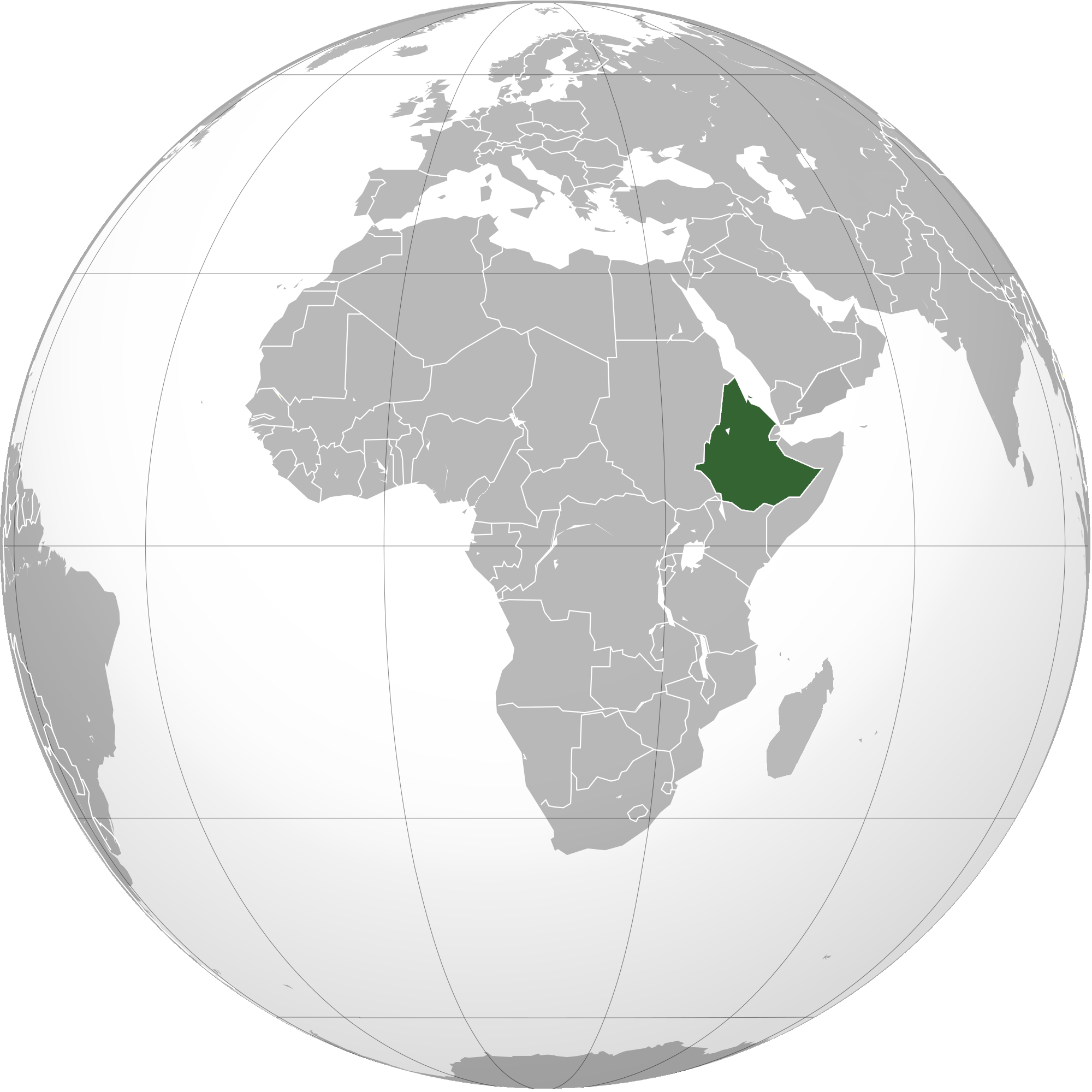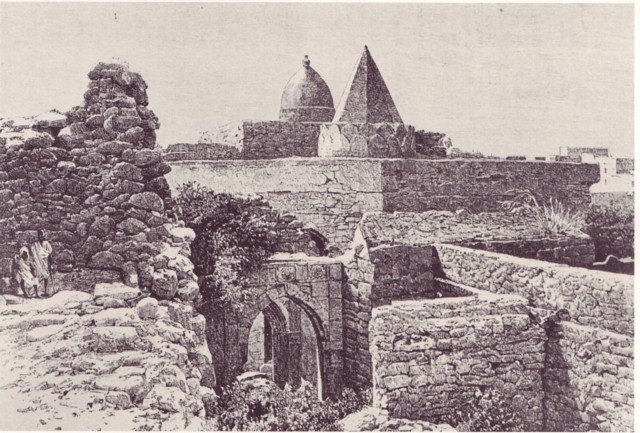|
Gomma Kingdom
The Kingdom of Gomma was a kingdom in the Gibe region of Ethiopia that emerged in the 18th century. It was based in Agaro. Location Gomma shared its northern border with Limmu-Ennarea, its western border with Gumma, its southern border with Gera, and its eastern border with Jimma. Its capital was Agaro. This former kingdom was mostly located in an undulating valley, with a population estimated in 1880 of about 15,000-16,000; its extent is roughly the same as the modern woreda of Gomma. Beckingham and Huntingford considered Gomma, along with Gumma, was the least economically developed of the Gibe kingdoms; however Mohammed Hassen writes that "the people of Gomma devoted themselves to farming, earning a reputation for a high degree of civilization. Also located in the kingdom of Gomma were two hills, Sinka and Bemba (the last was also called Kella Egdu Biya, or "Gate of the Watching of the Land"), which were sacred to the Oromo. They were inhabited by prophets who lived wi ... [...More Info...] [...Related Items...] OR: [Wikipedia] [Google] [Baidu] |
Ethiopian Empire
The Ethiopian Empire, historically known as Abyssinia or simply Ethiopia, was a sovereign state that encompassed the present-day territories of Ethiopia and Eritrea. It existed from the establishment of the Solomonic dynasty by Yekuno Amlak around 1270 until the 1974 Ethiopian coup d'état, 1974 coup d'état by the Derg, which ended the reign of the final Emperor, Haile Selassie. In the late 19th century, under Emperor Menelik II, the Menelik II's conquests, empire expanded significantly to the south, and in 1952, Federation of Ethiopia and Eritrea, Eritrea was federated under Selassie's rule. Despite being surrounded by hostile forces throughout much of its history, the empire maintained a kingdom centered on its Orthodox Tewahedo, ancient Christian heritage. Founded in 1270 by Yekuno Amlak, who claimed to descend from the last Kingdom of Aksum, Aksumite king and ultimately King Solomon and the Queen of Sheba, it replaced the Agaw people, Agaw Zagwe Kingdom, kingdom of the Za ... [...More Info...] [...Related Items...] OR: [Wikipedia] [Google] [Baidu] |
Mogadishu
Mogadishu, locally known as Xamar or Hamar, is the capital and List of cities in Somalia by population, most populous city of Somalia. The city has served as an important port connecting traders across the Indian Ocean for millennia and has an estimated urban population of 2,610,483. Mogadishu is located in the coastal Banaadir region on the Indian Ocean, which, unlike other Somali regions, is considered a municipality rather than a (federal state). Mogadishu has a long history, which ranges from the ancient history, ancient period up until the present, serving as the capital of the Sultanate of Mogadishu in the 9th-13th century, which for many centuries controlled the Indian Ocean gold trade and eventually came under the Ajuran Sultanate in the 13th century which was an important player in the medieval Silk Road maritime trade. Mogadishu enjoyed the height of its prosperity during the 14th and 15th centuries and was during the early modern period considered the wealthiest ... [...More Info...] [...Related Items...] OR: [Wikipedia] [Google] [Baidu] |
Rulers Of The Giba State Of Goma
The following is a list of rulers of the Kingdom of Gomma. Gomma was one of the monarchies in the Gibe region of Ethiopia that emerged in the 18th century. List of rulers of the Gibe kingdom of Gomma Source: C. F. Beckingham and G. W. B. Huntingford, ''Some Records of Ethiopia, 1593-1646'' (London: Hakluyt Society, 1954), p. lxxxix See also *Monarchies of Ethiopia *Rulers and heads of state of Ethiopia {{DEFAULTSORT:Gibe State Of Goma, Rulers Kings of Gibe, Goma Lists of rulers in Africa, Gibe Goma ... [...More Info...] [...Related Items...] OR: [Wikipedia] [Google] [Baidu] |
List Of Sunni Muslim Dynasties
The following is a list of Sunni dynasties. Asia Arabian Peninsula * Ziyadid dynasty (819–1018) * Banu Wajih (926–965) * Sulaymanids (1063–1174) * Mahdids (1159–1174) * Kathiri (Hadhramaut) (1395–1967) * Al-Jabriyun (1417–1521) * Banu Khalid (1669–1796) * Al Qasimi (Ras al Khaymah) (1727–present) *House of Saud (Saudi Arabia) (1744–present) *House of Al-Sabah (Kuwait) (1752–present) * Al Nahyan family (Abu Dhabi) (1761–present) * Al Qasimi (Sharjah) (18th century–present) * Al Mualla (Umm al-Quwain) (1775–present) * Al Khalifa family (Bahrain) (1783–present) *Al Thani (Qatar) (1851–present) Iraq/Iran and Caucasus * Dulafid dynasty (early 9th century–897) * Samanid dynasty (819–999) * Tahirid dynasty (821–873) * Saffarid dynasty (861–1003) * Sajids (889–929) * Farighunid (late 9th–early 11th centuries) * Ma'danids (late 9th–11th centuries) * Sallarid (942–979) * Shaddadid dynasty (951–1199) * Rawadid dynasty (955–1116) * Annaz ... [...More Info...] [...Related Items...] OR: [Wikipedia] [Google] [Baidu] |
Menelek II Of Ethiopia
Menelik II ( ; horse name Aba Dagnew (Amharic: አባ ዳኘው ''abba daññäw''); 17 August 1844 – 12 December 1913), baptised as Sahle Maryam (ሣህለ ማርያም ''sahlä maryam'') was king of Shewa from 1866 to 1889 and Emperor of Ethiopia from 1889 to his death in 1913. At the height of his internal power and external prestige, the process of Menelik II's conquests, territorial expansion and creation of the modern empire-state was largely completed by 1898.Zewde, Bahru. A history of Ethiopia: 1855–1991. 2nd ed. Eastern African studies. 2001 The Ethiopian Empire was transformed under Menelik: the major signposts of modernisation were put in place, with the assistance of key ministerial advisors. Externally, Menelik led Ethiopian troops against Kingdom of Italy, Italian invaders in the First Italo-Ethiopian War; following a decisive victory at the Battle of Adwa, recognition of Ethiopia's independence by external powers was expressed in terms of diplomatic representa ... [...More Info...] [...Related Items...] OR: [Wikipedia] [Google] [Baidu] |
Qadiriya
The Qadiriyya () or the Qadiri order () is a Sunni Sufi order (''Tariqa'') founded by Abdul Qadir Gilani (1077–1166, also transliterated ''Jilani''), who was a Hanbali scholar from Gilan, Iran. The order, with its many sub-orders, is widespread. Its members are present in India, Bangladesh, China, Turkey, Indonesia, Afghanistan, Pakistan, the Balkans, Russia, Palestine, as well as East, West and North Africa. Gladney, Dru"Muslim Tombs and Ethnic Folklore: Charters for Hui Identity"''Journal of Asian Studies'', August 1987, Vol. 46 (3): 495-532; pp. 48–49 in the PDF file. History Abdul Qadir Gilani, a Hanbali scholar and preacher, having been a pupil at the madrasa of Abu Saeed Mubarak, became the leader of the madrasa after Mubarak's death in 1119. Being the new Sheikh, he and his large family lived in the madrasa until his death in 1166, when his son, Abdul Razzaq, succeeded his father as Sheikh. Abdul Razzaq published a hagiography of his father, adding to his already e ... [...More Info...] [...Related Items...] OR: [Wikipedia] [Google] [Baidu] |
Abba Manno
ABBA ( ) were a Swedish pop group formed in Stockholm in 1972 by Agnetha Fältskog, Björn Ulvaeus, Benny Andersson, and Anni-Frid Lyngstad. They are one of the most popular and successful musical groups of all time, and are one of the best-selling music acts in the history of popular music. In , ABBA became 's first winner of the Eurovision Song Contest with the song "Waterloo", which in 2005 was chosen as the best song in the competition's history as part of the 50th anniversary celebration of the contest. During the band's main active years, it consisted of two couples: Fältskog and Ulvaeus, and Lyngstad and Andersson. With the increase of their popularity, their personal lives suffered, which eventually resulted in the collapse of both marriages. The relationship changes were reflected in the group's music, with later songs featuring darker and more introspective lyrics. After ABBA disbanded in December 1982, Andersson and Ulvaeus continued their success writing music ... [...More Info...] [...Related Items...] OR: [Wikipedia] [Google] [Baidu] |
Islam
Islam is an Abrahamic religions, Abrahamic monotheistic religion based on the Quran, and the teachings of Muhammad. Adherents of Islam are called Muslims, who are estimated to number Islam by country, 2 billion worldwide and are the world's Major religious groups, second-largest religious population after Christians. Muslims believe that Islam is the complete and universal version of a Fitra, primordial faith that was revealed many times through earlier Prophets and messengers in Islam, prophets and messengers, including Adam in Islam, Adam, Noah in Islam, Noah, Abraham in Islam, Abraham, Moses in Islam, Moses, and Jesus in Islam, Jesus. Muslims consider the Quran to be the verbatim word of God in Islam, God and the unaltered, final revelation. Alongside the Quran, Muslims also believe in previous Islamic holy books, revelations, such as the Torah in Islam, Tawrat (the Torah), the Zabur (Psalms), and the Gospel in Islam, Injil (Gospel). They believe that Muhammad in Islam ... [...More Info...] [...Related Items...] OR: [Wikipedia] [Google] [Baidu] |
Didessa River
The Didessa (pronounced: ɗeɗ:e:s:a; ) is a river in western Ethiopia. A tributary of the Abay River, it rises in the mountains of Gomma, flowing in a northwesterly direction to its confluence where the course of the Abay has curved to its southernmost point before turning northwards. The Didessa's drainage area is about , covering portions of the Benishangul-Gumuz Region and the West Welega Zone of the Oromia Region. Tributaries on the right bank include the Enareya, Aet, Wama, and the Angar rivers; on the left side the most important tributary is the Dobana River. Exploring this river in the mid-1890s and from interviews with local inhabitants, Alexander Bulatovich asserted that downstream of its junction with the Angar, the Didessa is rapid-free and potentially navigable. Human history The early 20th-century explorer Herbert Weld Blundell opined that "Didessa" appears to have replaced a much older name for this river, finding no earlier usage for it "before 1861, when ... [...More Info...] [...Related Items...] OR: [Wikipedia] [Google] [Baidu] |
Antonio Cecchi
Antonio is a masculine given name of Etruscan origin deriving from the root name Antonius. It is a common name among Romance language–speaking populations as well as the Balkans and Lusophone Africa. It has been among the top 400 most popular male baby names in the United States since the late 19th century and has been among the top 200 since the mid 20th century. In the English language, it is translated as Anthony, and has some female derivatives: Antonia, Antónia, Antonieta, Antonietta, and Antonella'. It also has some male derivatives, such as Anthonio, Antón, Antò, Antonis, Antoñito, Antonino, Antonello, Tonio, Tono, Toño, Toñín, Tonino, Nantonio, Ninni, Totò, Tó, Tonini, Tony, Toni, Toninho, Toñito, and Tõnis. The Portuguese equivalent is António (Portuguese orthography) or Antônio (Brazilian Portuguese). In old Portuguese the form Antão was also used, not just to differentiate between older and younger but also between more and less important. In ... [...More Info...] [...Related Items...] OR: [Wikipedia] [Google] [Baidu] |
Shebelle River
The Shebelle River ( Oromo: Laga Shabeellee, , , ) also known historically as the Nile of Mogadishu, begins in the highlands of Ethiopia, and then flows southeast into Somalia towards Mogadishu. Near Mogadishu, it turns sharply southwest, where it follows the coast. Below Mogadishu, the river becomes seasonal. During most years, the river dries up near the mouth of the Jubba River, while in seasons of heavy rainfall, the river actually reaches the Jubba and thus the ocean. During periods of heavy rainfall in Ethiopia, the Shebelle River and the Jubba River merge, and their combined waters ultimately reach the Indian Ocean. However, in drier years, the Shebelle River diminishes and transforms into a series of wetlands and sandy plains to the northeast of the confluence with the Jubba. The Shebelle River has a total length of 1,820 km. The area surrounding the Shebeli River is inhabited by Somali people in the Somali Region of Ethiopia and Somali people in Somalia. In the lower bas ... [...More Info...] [...Related Items...] OR: [Wikipedia] [Google] [Baidu] |





